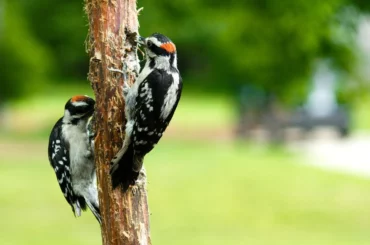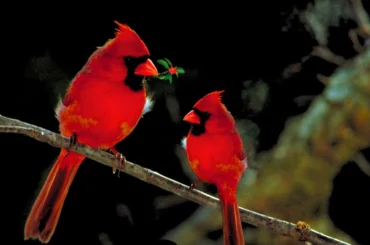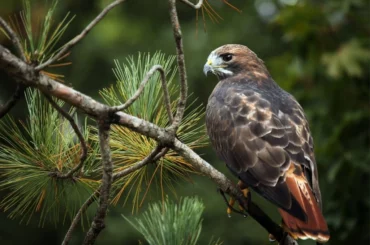Have you ever wondered about the enchanting world of owls in Ohio?
Ohio is home to several remarkable owls, each with unique characteristics and captivating behaviors. They have long fascinated humans with their mysterious nature and unique adaptations.
They can glide softly through the night because their feathers are designed differently than other birds. Their feathers have fringed edges that disrupt airflow, reducing turbulence and minimizing sound.
What do Owls look like in Ohio?
Regarding the owls found in Ohio, several common characteristics unite these magnificent birds.
Owls in Ohio vary in size, ranging from small to large. The eastern screech owl is among the smallest at about 7 to 10 inches long. On the other hand, the great horned owl stands at a towering 20 to 25 inches, making it one of the largest owls.
Ohio’s owls are known for their eye-catching variety of patterns and hues. The plumage of Ohio’s owls is excellent camouflage, enabling them to blend seamlessly into their surroundings. Many species exhibit a combination of earthy tones such as browns, grays, and tans, allowing them to disappear amidst the bark of trees or the forest’s foliage.
Small mammals, birds, reptiles, and insects are only a few of the foods owls consume in Ohio. Many species are skilled hunters that rely on their exceptional night vision and acute hearing to locate prey.
1. Great Horned Owl
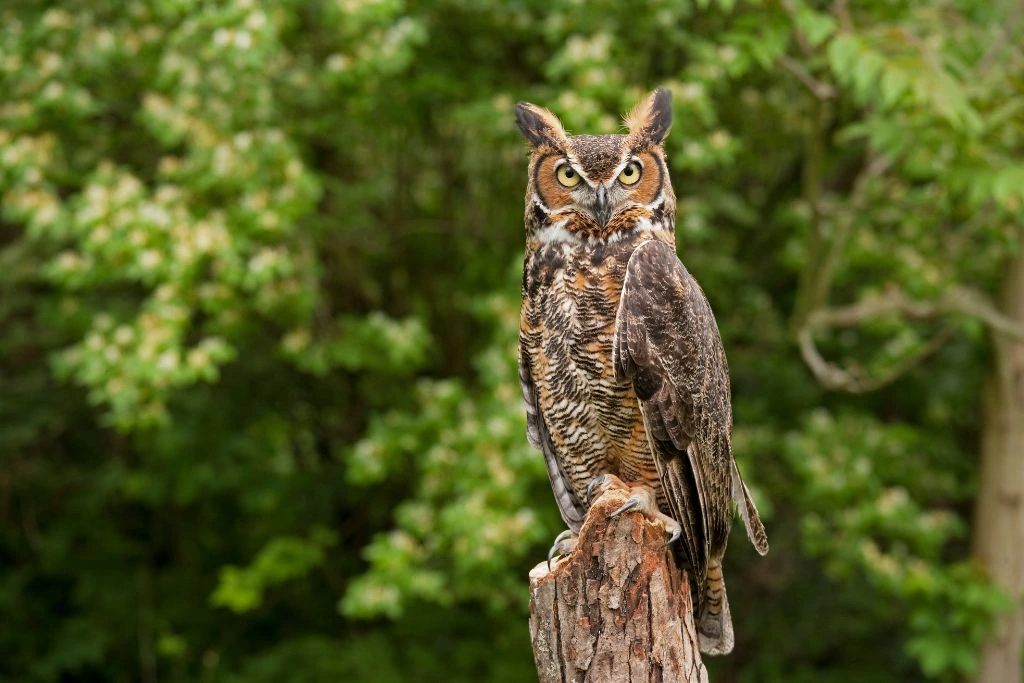
- Kingdom: Animalia
- Phylum: Chordata
- Class: Aves
- Order: Strigiformes
- Genus: Bubo
- Species: B. virginianum
The great horned owl (Bubo virginianum) stands tall with an impressive height of 20 to 25 inches, making it one of the largest owls in Ohio. Its distinctive feature is the prominent ear tufts resembling horns, which give it a striking and fierce appearance. Its feathers are a mottled combination of browns, grays, and whites, providing excellent camouflage in various habitats.
Ohio is home to a wide variety of environments that support the great horned owl due to the species’ impressive capacity for adaptation. Its large eyes are ideally suited for low-light conditions, enabling exceptional night vision. This, coupled with its acute hearing, allows the owl to detect and locate prey accurately.
A great horned owl can live anywhere from 10 to 15 years in the wild. However, some individuals have been known to live over 20 years, highlighting the species’ resilience and longevity.
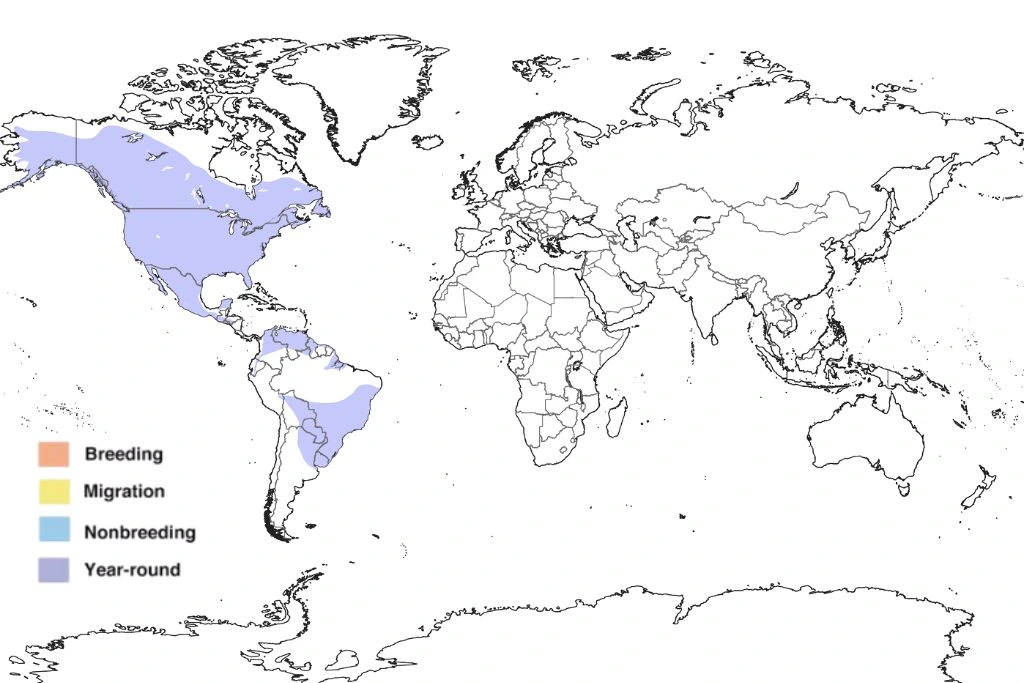
2. Barred Owl
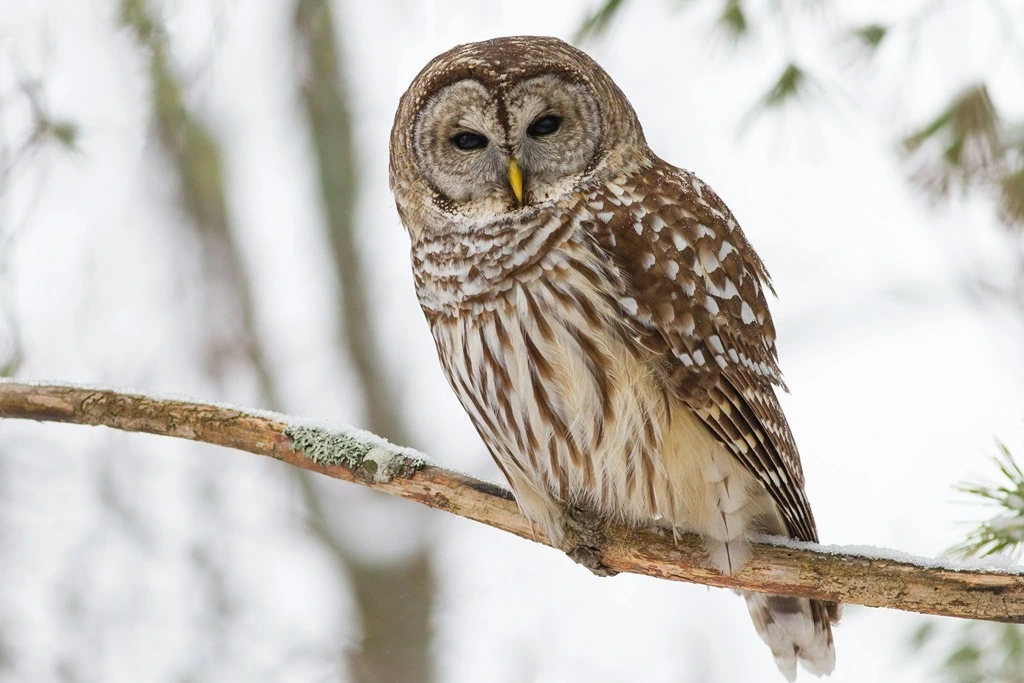
- Kingdom: Animalia
- Phylum: Chordata
- Class: Aves
- Order: Strigiformes
- Genus: Strix
- Species: S. varia
The barred owl (Strix varia) is a medium-sized owl, measuring approximately 16 to 24 inches in height. Its striking feature is the horizontal barring pattern on its breast and belly, which gives it its name.
The overall plumage of the barred owl is a mix of brown, gray, and white, blending harmoniously with its woodland habitat. Its large, dark eyes and facial disk further add to its charm, giving it an intense and wise expression.
The paired relationship in a barred owl is quite strong because these birds are monogamous. They typically nest in tree cavities, using natural hollows or old nests created by other birds. The male will provide food for the female during the late winter or early spring breeding season.
In the wild, barred owls have an average life expectancy of around 10 to 15 years. Some individuals have been documented to live beyond the age of 20. Factors such as predation, disease, and habitat availability can influence the lifespan of these remarkable owls.
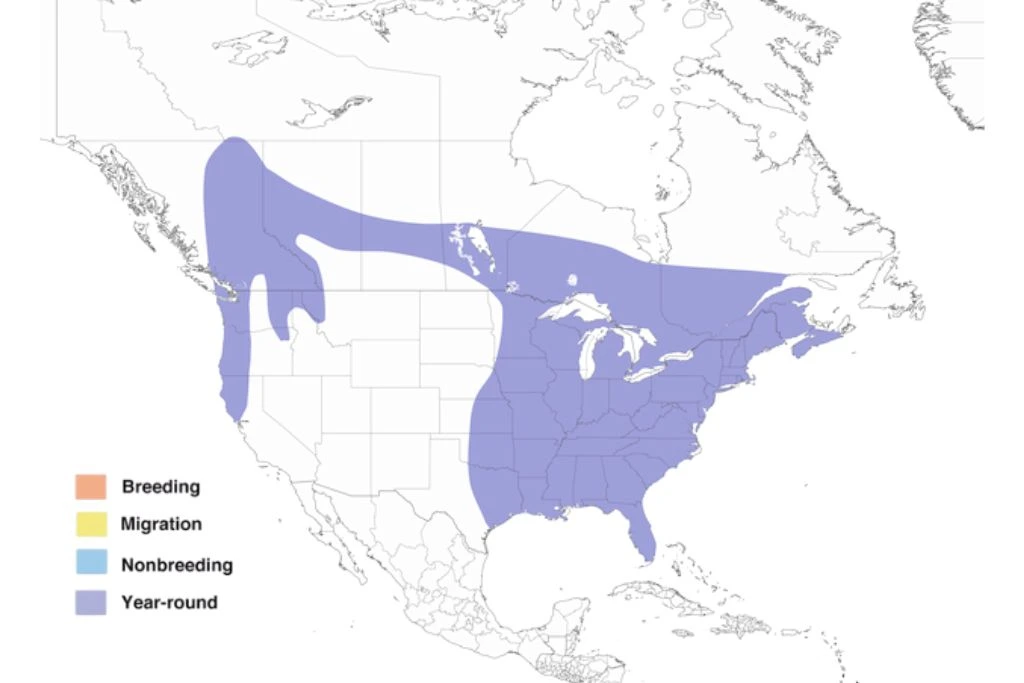
3. Eastern Screech Owl
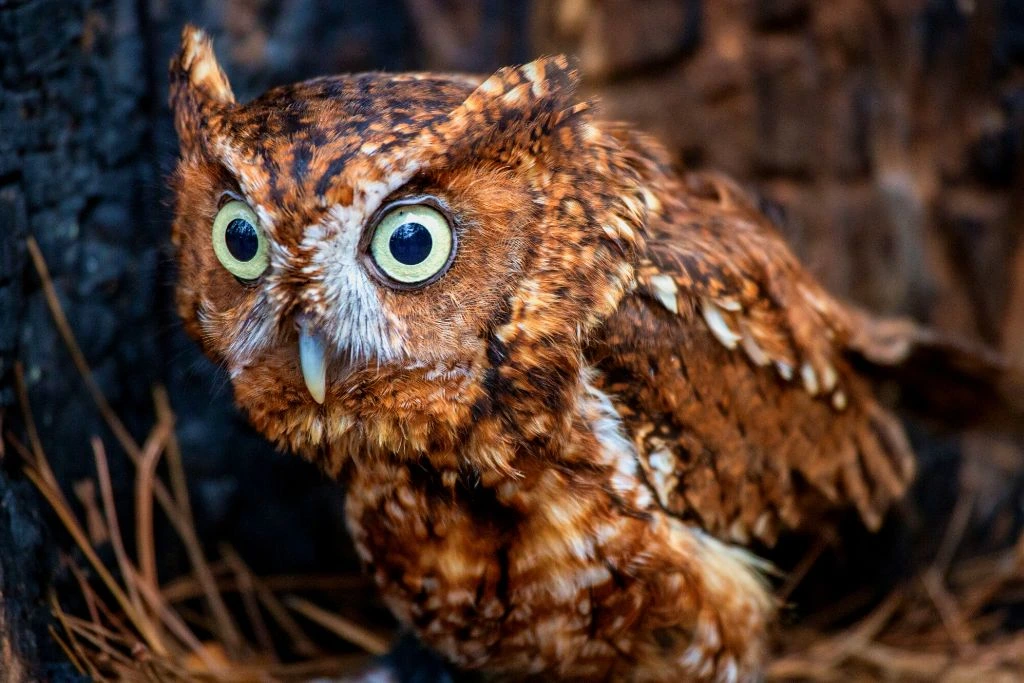
- Kingdom: Animalia
- Phylum: Chordata
- Class: Aves
- Order: Strigiformes
- Genus: Megascops
- Species: M. asio
The eastern screech owl (Megascops asio) is a compact owl, measuring around 7 to 10 inches in height. It comes in two color morphs – one gray and the other a rusty brown.
Their feathers have soft edges that reduce the noise produced during flight, enabling them to approach prey silently. You can spot these versatile owls anywhere from forests and woodlands to suburban backyards and urban parks.
The average lifespan of an eastern screech owl in the wild is between 6 and 10 years. Some have lived over 15 years, showing their resilience and adaptation.
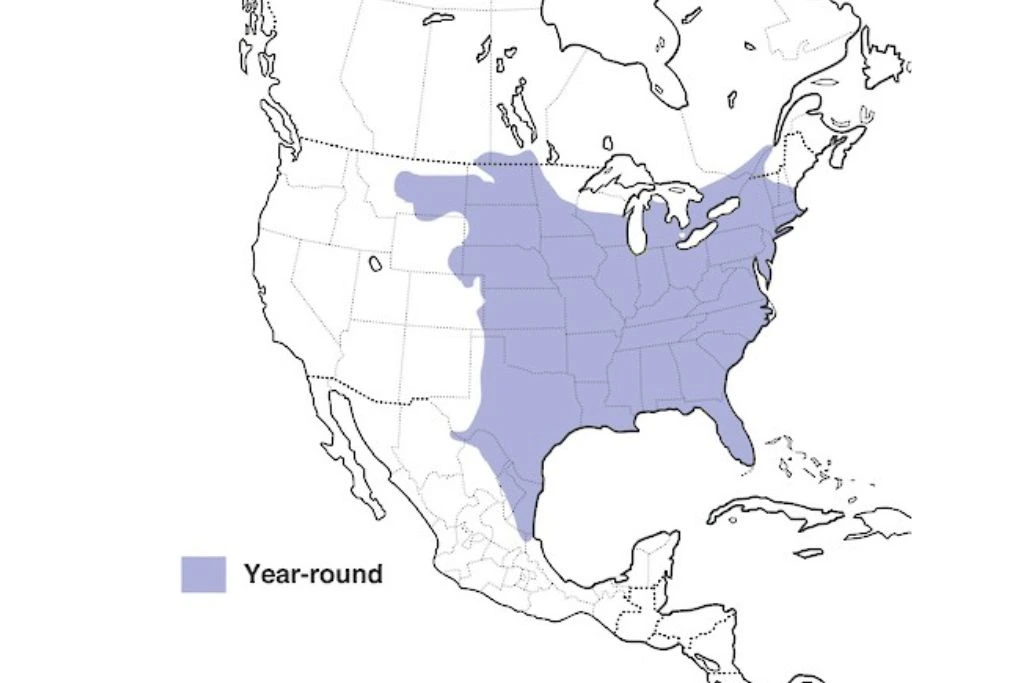
4. Short-Eared Owl
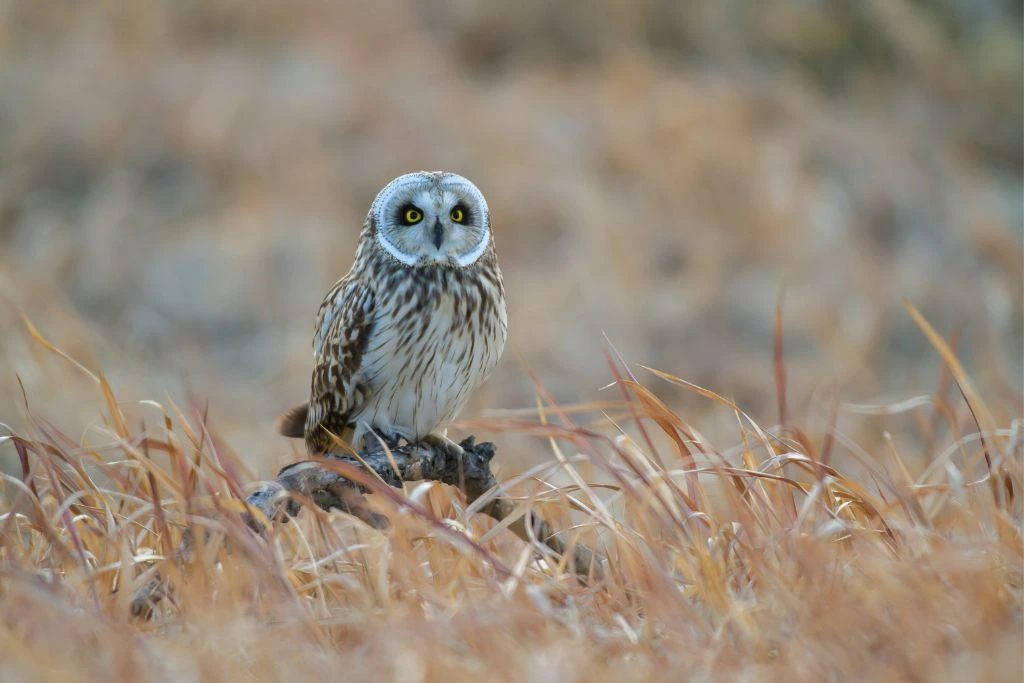
- Kingdom: Animalia
- Phylum: Chordata
- Class: Aves
- Order: Strigiformes
- Genus: Asio
- Species: A. flammeus
The short-eared owl (Asio flammeus) is a medium-sized owl, measuring approximately 13 to 17 inches in height. It has a stocky build and broad wings, allowing it to navigate open areas with agility. The owl’s plumage is mottled brown with streaks of white, providing excellent camouflage against the grassy habitats it frequents.
Grasslands, meadows, and marshes are just a few of the open environments that short-eared owls call home. They are crepuscular and active at dawn and dusk, unlike other owls.
This adaptation allows them to take advantage of hunting opportunities when small mammals, such as mice and voles, are active.
The usual lifespan of a short-eared owl in the wild is between 3 and 5 years. However, there have been cases of short-eared owls living for up to 10 years.
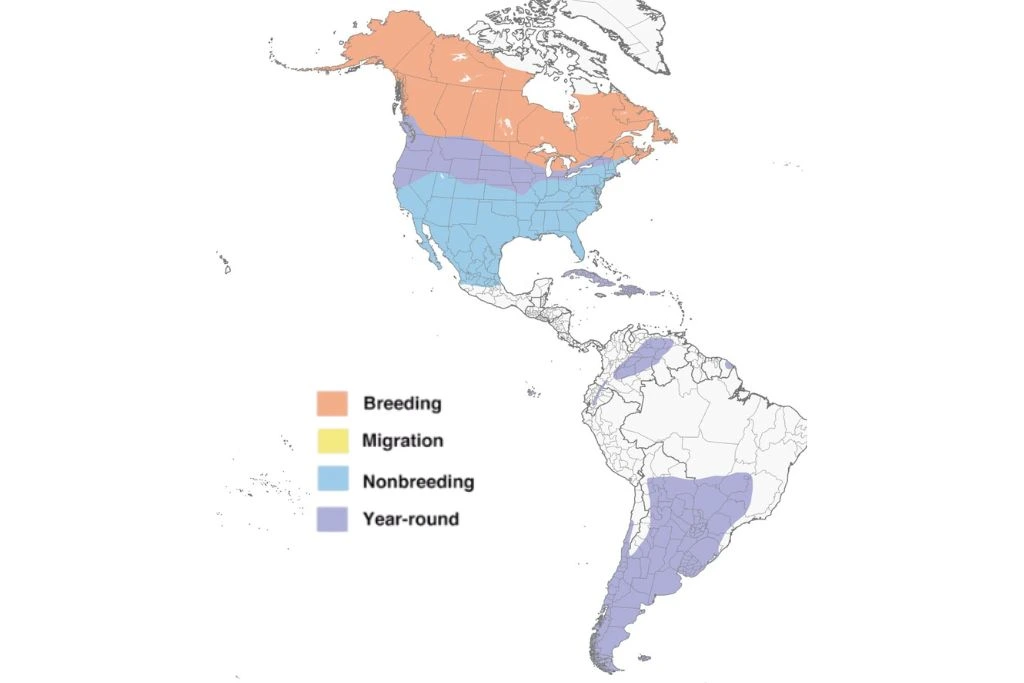
5. Barn Owl
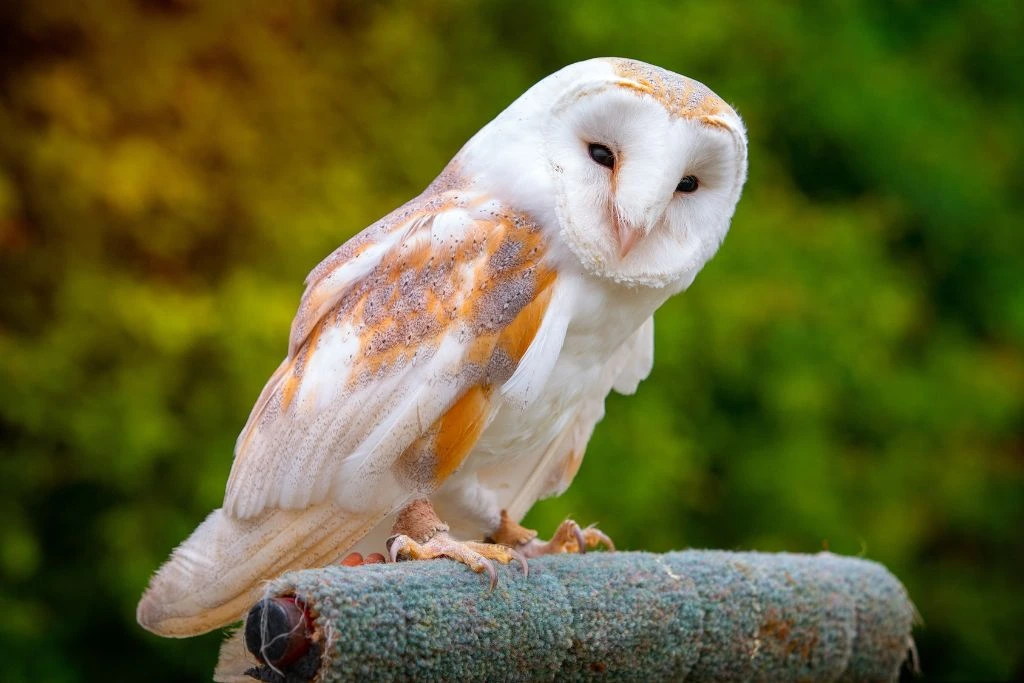
- Kingdom: Animalia
- Phylum: Chordata
- Class: Aves
- Order: Strigiformes
- Genus: Tyto
- Species: T. alba
With its heart-shaped face and ethereal presence, the barn owl (Tyto alba) has captured the imaginations of bird enthusiasts and nature lovers alike.
The barn owl is 12 to 15 inches tall. Its feathers are soft and downy, enabling it to fly silently through the night. Unlike many other owls, the barn owl’s plumage is light in color, providing camouflage against the moonlit sky and making it an elusive and ethereal figure in the darkness.
The wide terrain of meadows, farms, and grasslands is ideal hunting grounds for these animals. They have exceptionally sensitive ears that are positioned asymmetrically on their head, which aids in precise sound localization. This adaptation allows them to pinpoint the location of prey, even when hidden beneath vegetation or snow.
They live about 5 years on average in the wild, but there are documented cases of barn owls living up to 15 years.
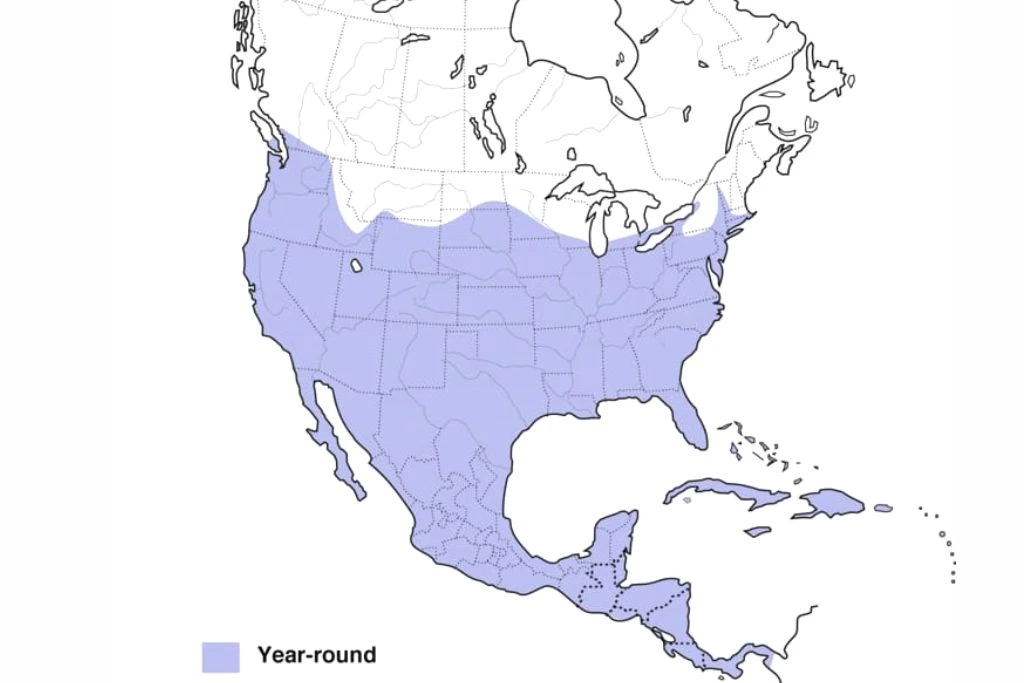
6. Northern Saw-Whet Owl
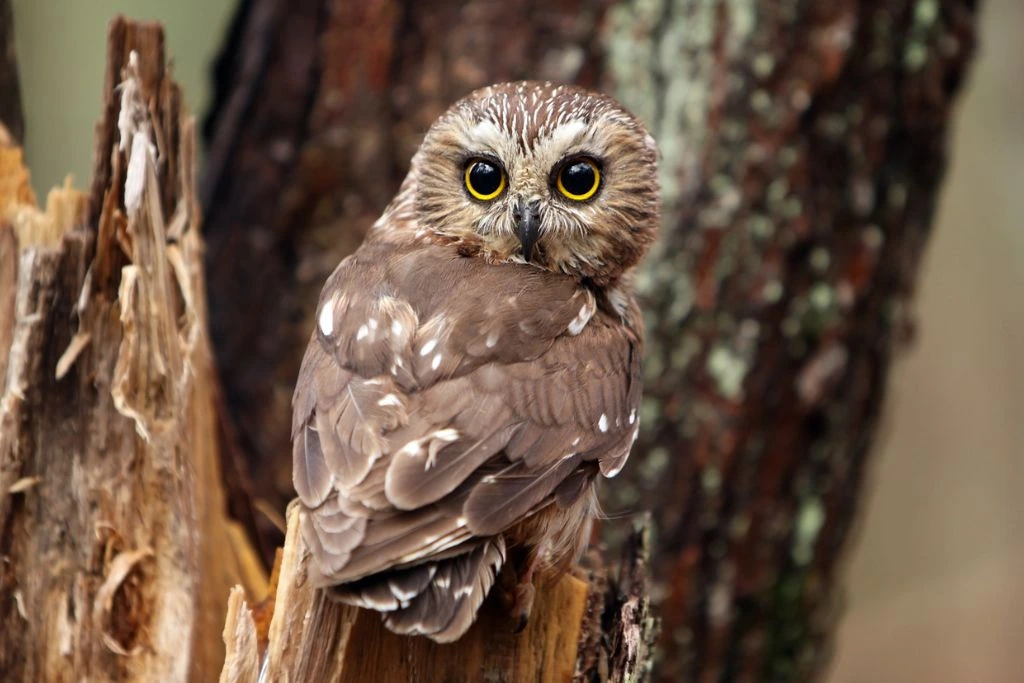
- Kingdom: Animalia
- Phylum: Chordata
- Class: Aves
- Order: Strigiformes
- Genus: Aegolius
- Species: A. acadicus
The northern saw-whet owl (Aegolius acadicus) is a captivating and petite owl species that are native to Ohio, adding a touch of enchantment to the state’s rich avian diversity. This owl is one of the smallest owl species in North America, measuring a mere 7 to 8 inches in height. It possesses a rounded head and a compact body, making it appear stout.
The owl’s plumage is primarily brown, with white and rusty markings on its chest and belly. Its large, round eyes are yellow and set within a dark facial disk, enhancing its nocturnal vision and enabling it to spot prey in low-light conditions.
Breeding occurs from late winter to early spring, with pairs forming solid bonds. The female lays a small clutch of 3 to 7 eggs, which are incubated primarily by her for approximately 27 to 29 days. Both parents contribute to the feeding and care of the owlets once they hatch.
A northern saw-whet owl’s life expectancy is typically between 3 and 5 years.
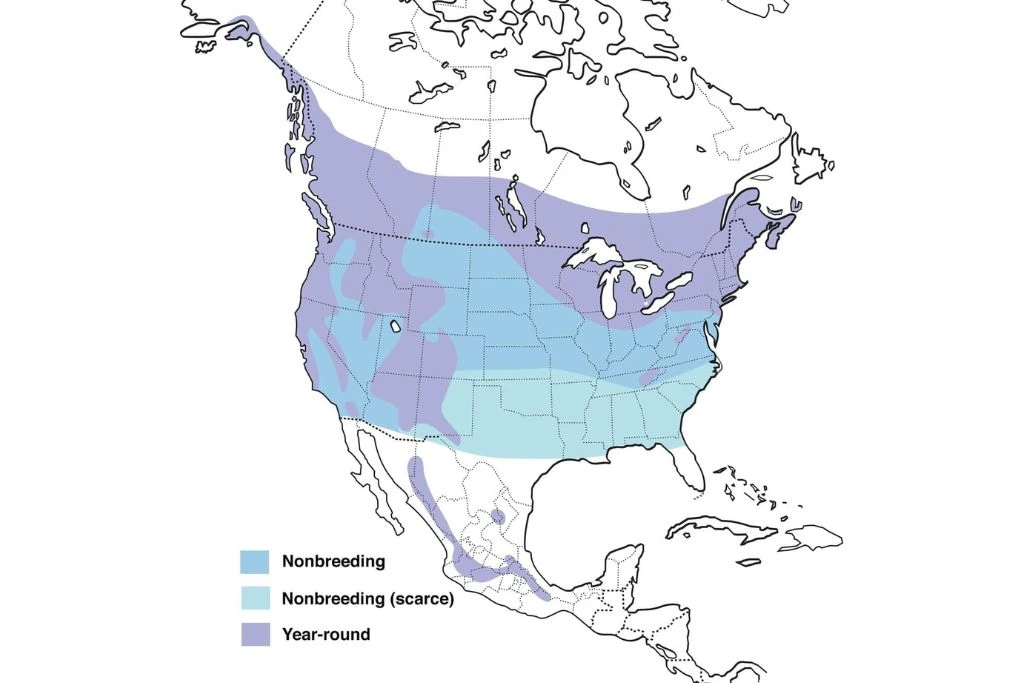
7. Snowy Owl
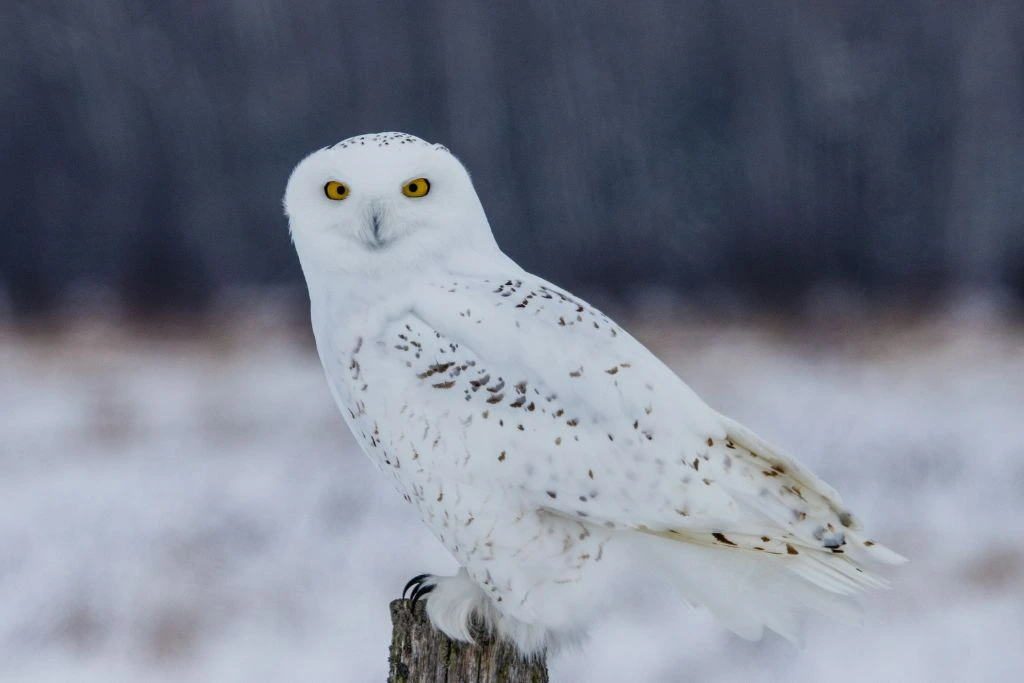
- Kingdom: Animalia
- Phylum: Chordata
- Class: Aves
- Order: Strigiformes
- Genus: Bubo
- Species: B. scandiacus
Although not a native resident of Ohio, the snowy owl (Bubo scandiacus) occasionally visits the state, creating excitement among birdwatchers and nature enthusiasts.
The snowy owl is a large owl species, with females slightly larger than males. It showcases a stunning plumage of predominantly white feathers, providing excellent camouflage in its snowy, Arctic habitat. Its round head features bright yellow eyes against the white plumage.
Unlike most owl species, the snowy owl does not have distinct ear tufts. Instead, it possesses dense feathers on its head that provide insulation in the cold Arctic climate.
In the wild, snowy owls live 9 to 10 years. However, some have been known to live longer, with records of up to 28 years.

8. Great Gray Owl
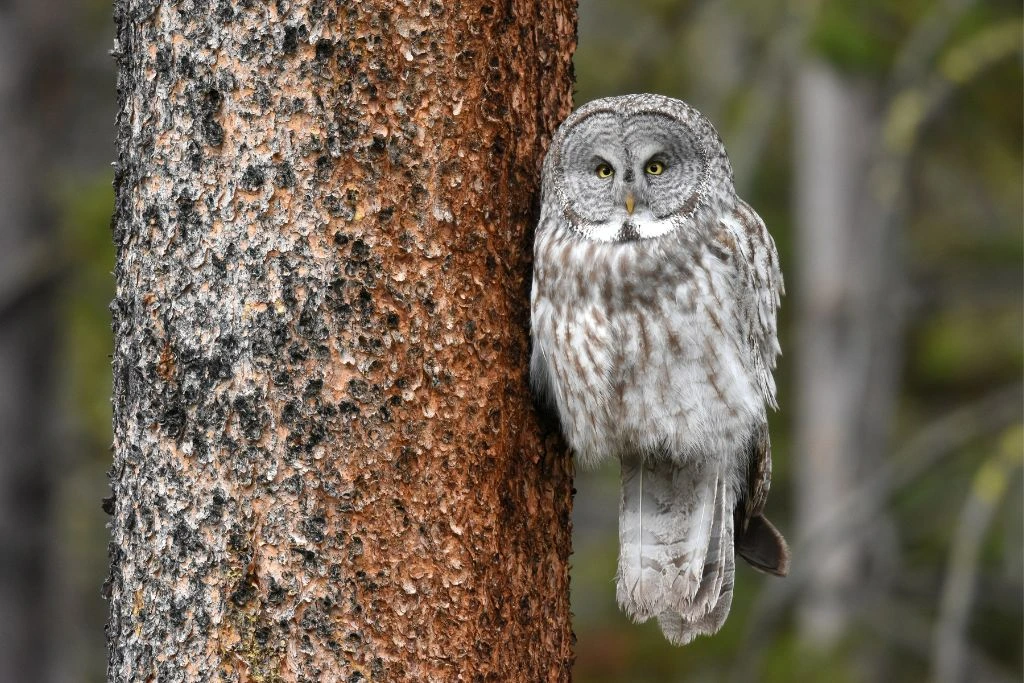
- Kingdom: Animalia
- Phylum: Chordata
- Class: Aves
- Order: Strigiformes
- Genus: Strix
- Species: S. nebulosa
The great gray owl (Strix nebulosa) is a magnificent bird with a wingspan of up to 5 feet and standing at an impressive height of 2 feet. This large Owl commands attention.
It boasts a distinctive facial disk framed by delicate gray feathers that resemble a majestic ruff. Its round, yellow eyes are set beneath a prominent facial disk, allowing it to excel in its nighttime hunting pursuits. The great gray owl is predominantly gray, blending seamlessly with the dense forests it calls home.
The typical lifespan of a wild northern great grey owl is roughly 10 years. Others have been documented to survive for 30 years or more.
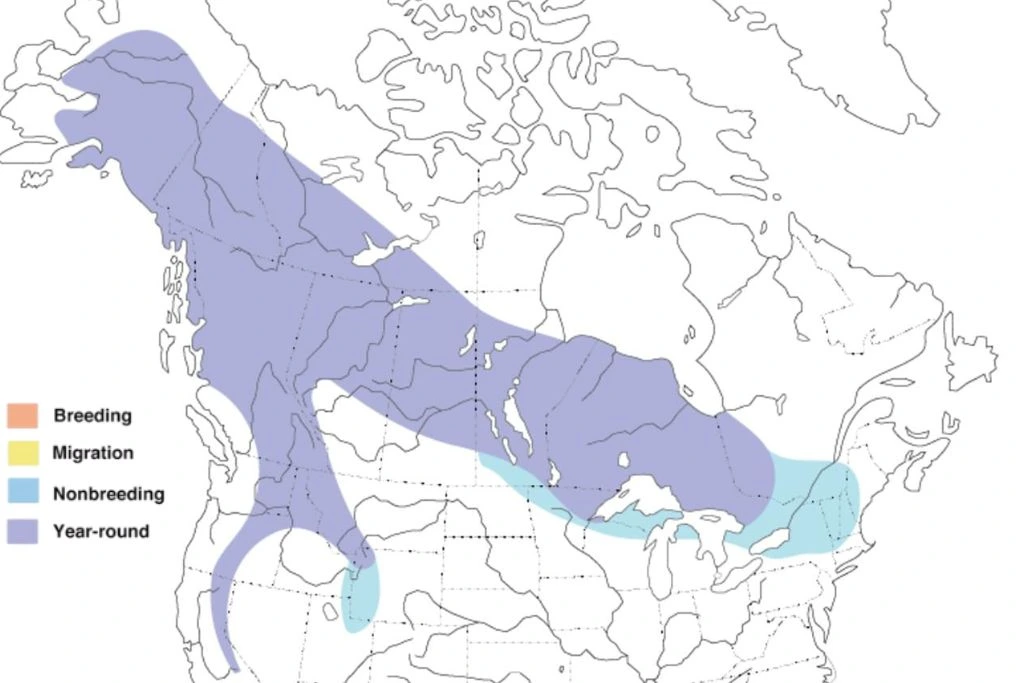
9. Boreal Owl
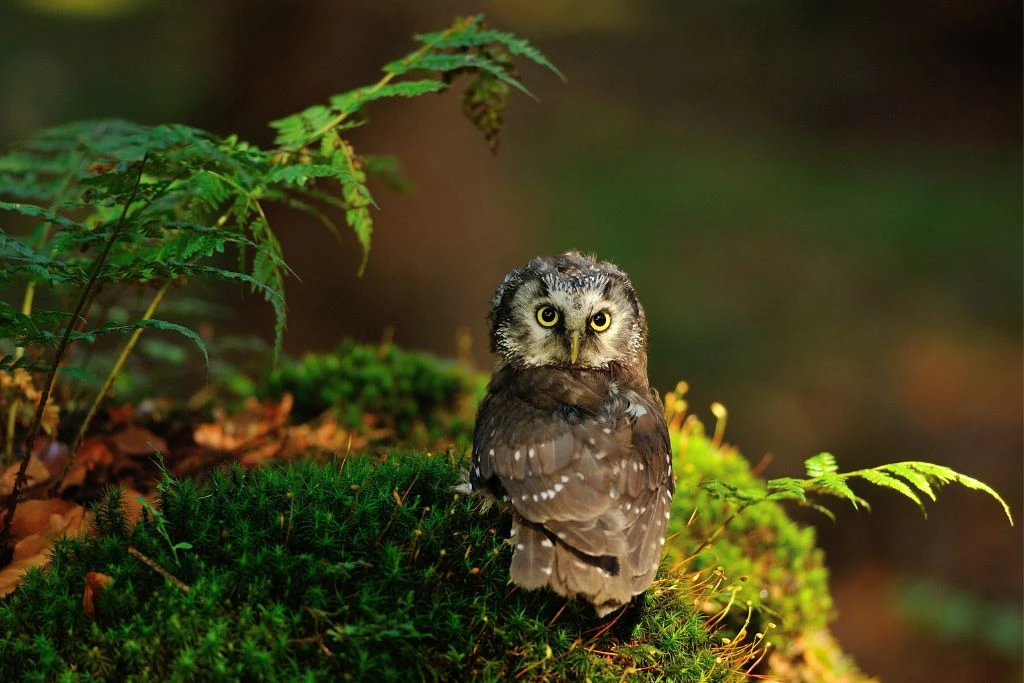
- Kingdom: Animalia
- Phylum: Chordata
- Class: Aves
- Order: Strigiformes
- Genus: Aegolius
- Species: A. funereus
The boreal owl (Aegolius funereus) is a small owl, measuring 9 to 10 inches long, and belongs to the family Strigidae. Its enchanting characteristics, impressive adaptations, and unique nesting and breeding behaviors make it an intriguing subject for bird enthusiasts and nature lovers.
With its round head and piercing yellow eyes, this nocturnal hunter displays remarkable keenness and exceptional night vision. Its silky feathering and mottled dark brown, white, and black pattern allows it to blend into the forest canopy. This owl boasts long, fluffy feathers on its legs, aiding in silent flight and providing insulation in the chilly Ohio winters.
Boreal owls have a lifespan of about 5 to 10 years in the wild. Some have been recorded to survive up to 15 years if provided with an ideal environment and adequate food supply.
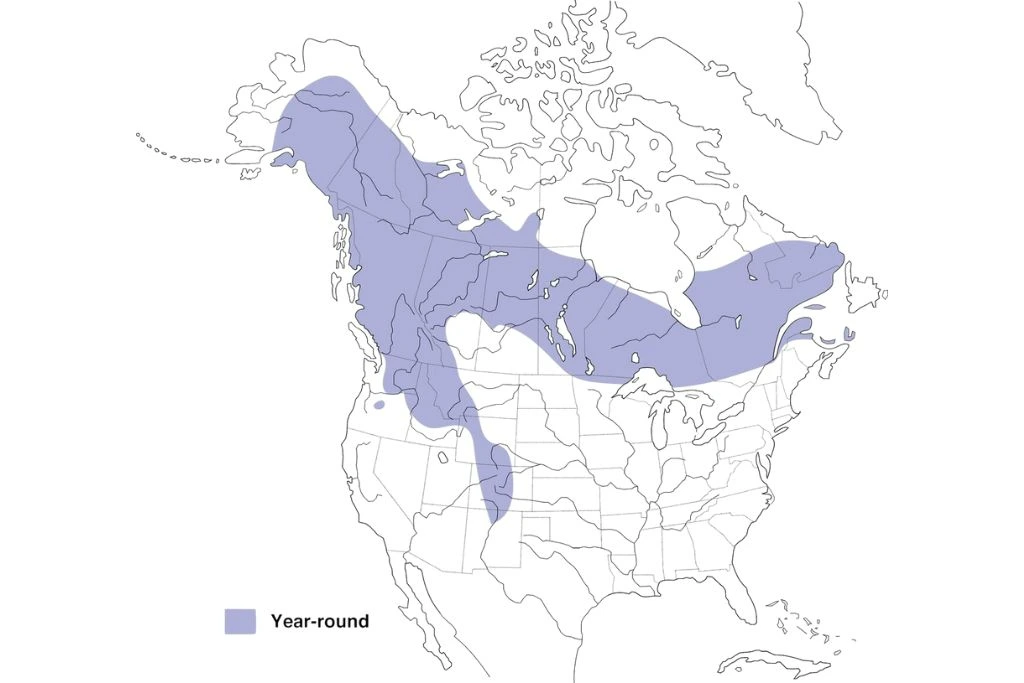
10. Burrowing Owl
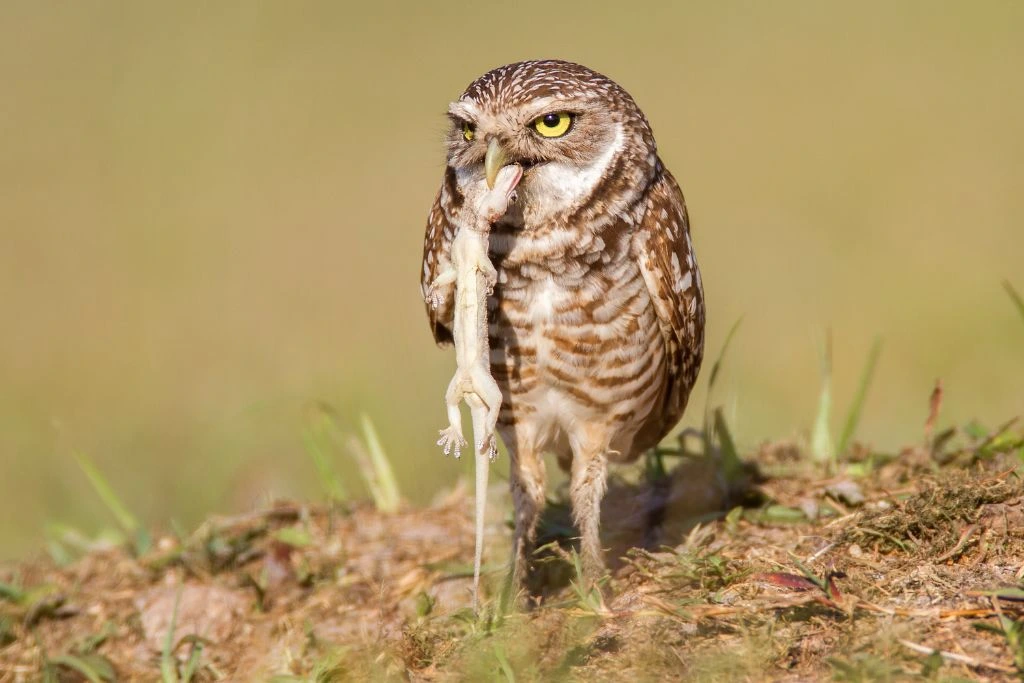
- Kingdom: Animalia
- Phylum: Chordata
- Class: Aves
- Order: Strigiformes
- Genus: Athene
- Species: A. cunicularia
Unlike most owl species, burrowing owls (Athene cunicularia) are relatively small, reaching a height of about 9 to 10 inches and weighing around 6 ounces.
They possess long legs and a compact body, which gives them a distinctive upright posture. Their round heads are adorned with striking yellow eyes, and they sport a white chin patch that contrasts beautifully with their brown and speckled plumage. These diminutive owls have animated facial expressions that exude curiosity and playfulness.
The average lifespan of a burrowing owl in the wild is between 6 and 8 years. Under ideal conditions and care, their lifespan can extend to 10 years.
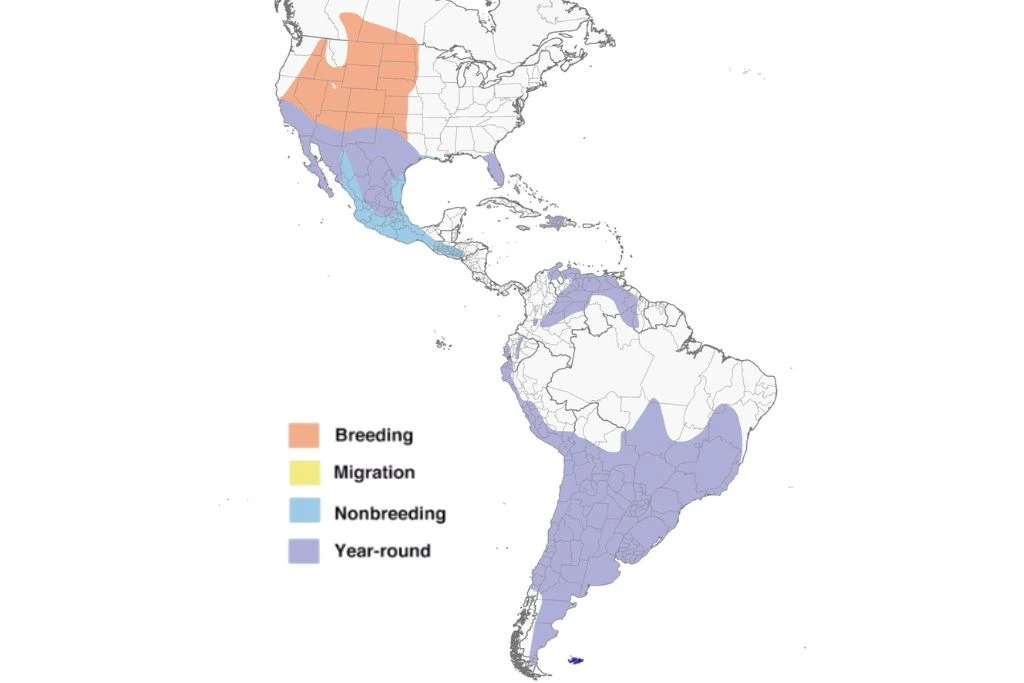
11. Northern Hawk Owl
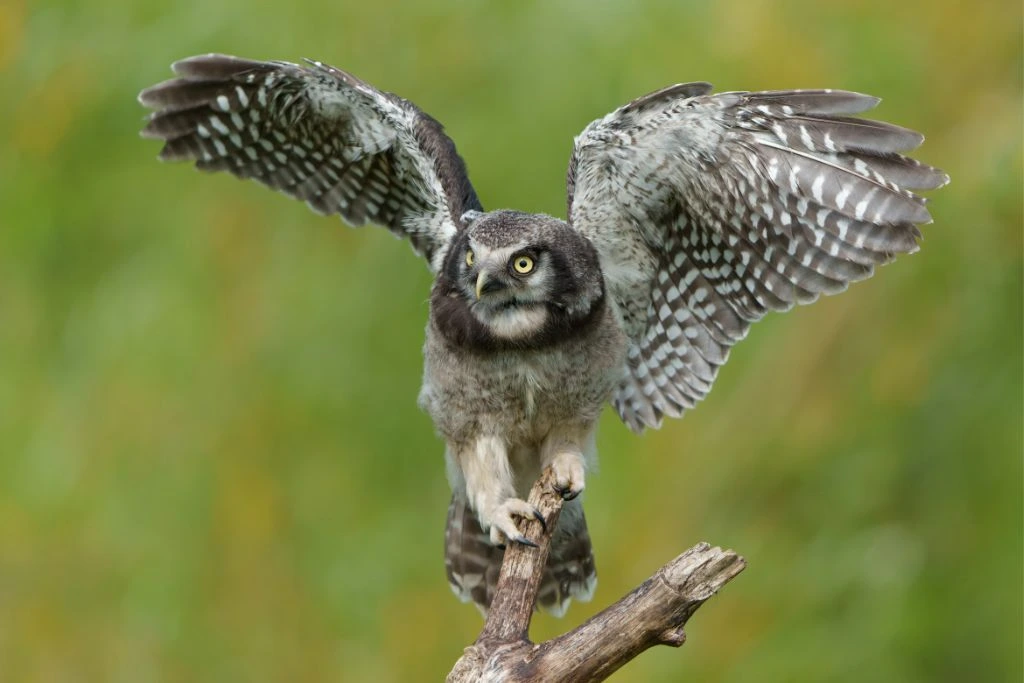
- Kingdom: Animalia
- Phylum: Chordata
- Class: Aves
- Order: Strigiformes
- Genus: Surnia
- Species: S. ulula
The northern hawk owl (Surnia ulula) stands out with its striking appearance and unmistakable features. This medium-sized owl has a slim body, long tail, and broad wings that let it explore open expanses and woodlands.
Its plumage displays a captivating combination of dark brown, gray, and white markings, providing excellent camouflage against tree bark and snow-covered landscapes.
The life expectancy for a northern hawk owl is between 5 and 10 years, yet there are cases of individuals living to be as old as 15 years old.
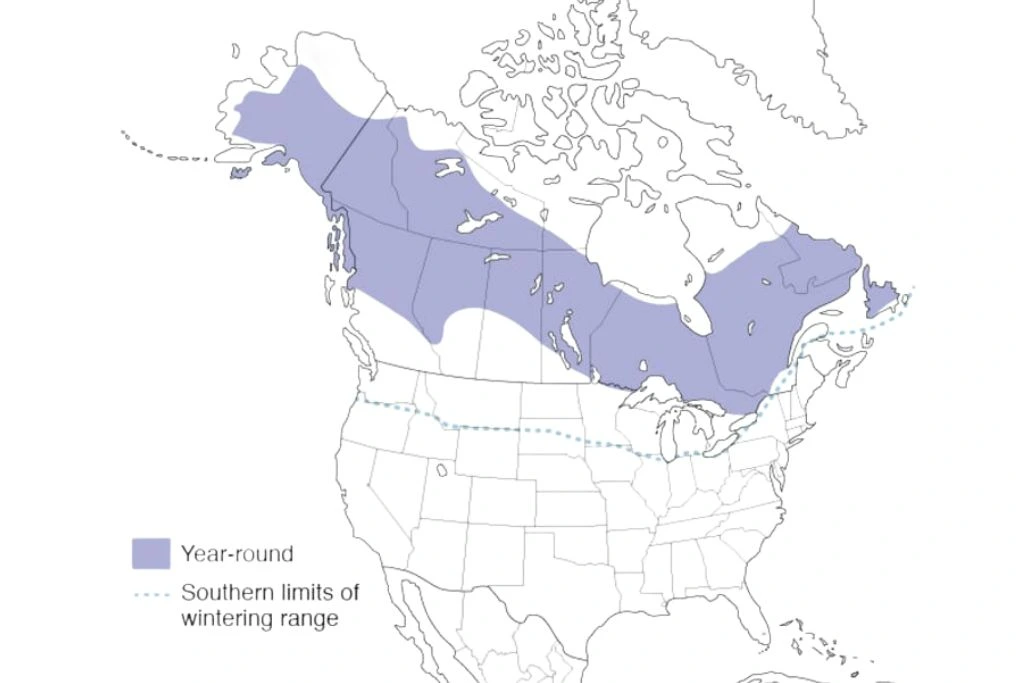
12. Long-Eared Owl
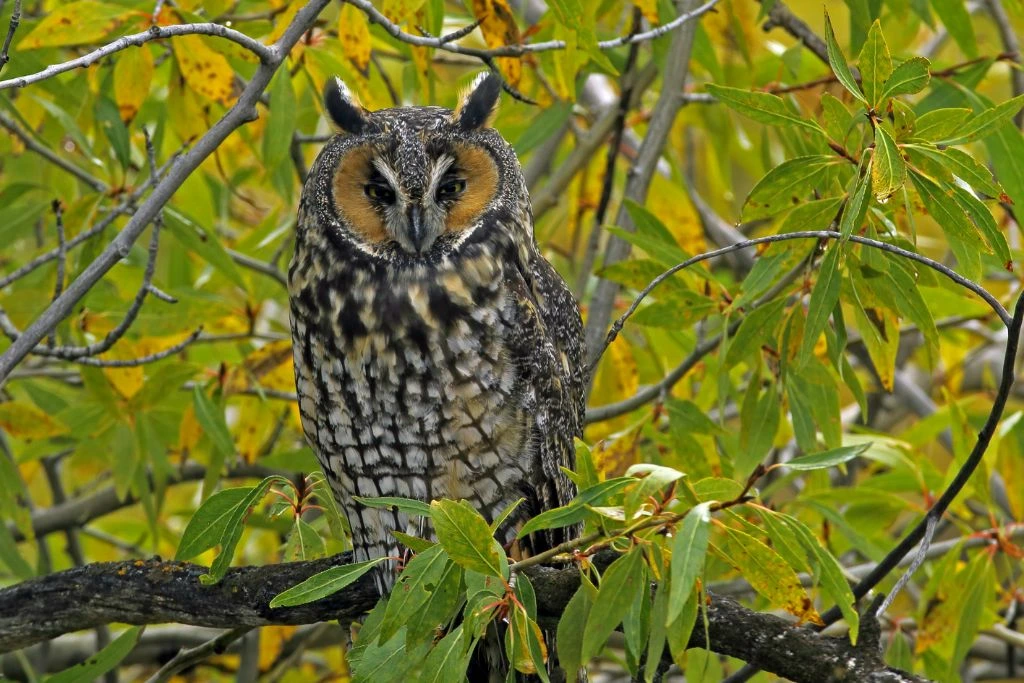
- Kingdom: Animalia
- Phylum: Chordata
- Class: Aves
- Order: Strigiformes
- Genus: Asio
- Species: A. otus
The long-eared owl (Asio otus) is a medium-sized owl that typically ranges in length from 14 to 16 inches. It is named for the conspicuous ear-like tufts that develop on the top of its head.
Its beautiful plumage features intricate brown, black, and gray patterns, blending seamlessly with the dappled sunlight filtering through the forest canopy. The piercing yellow eyes within a facial disk add to its captivating allure.
They are well-equipped for their woodland habitat, demonstrating remarkable adaptations that aid their hunting and survival. Its long ear tufts serve as camouflage and visual signals to communicate with other owls. Despite their name, these tufts are not actual ears but rather a display of feathers.
On average, a long-eared owl lives for about 4 to 5 years. Under ideal conditions and with proper care, their lifespan can extend up to 10 years.
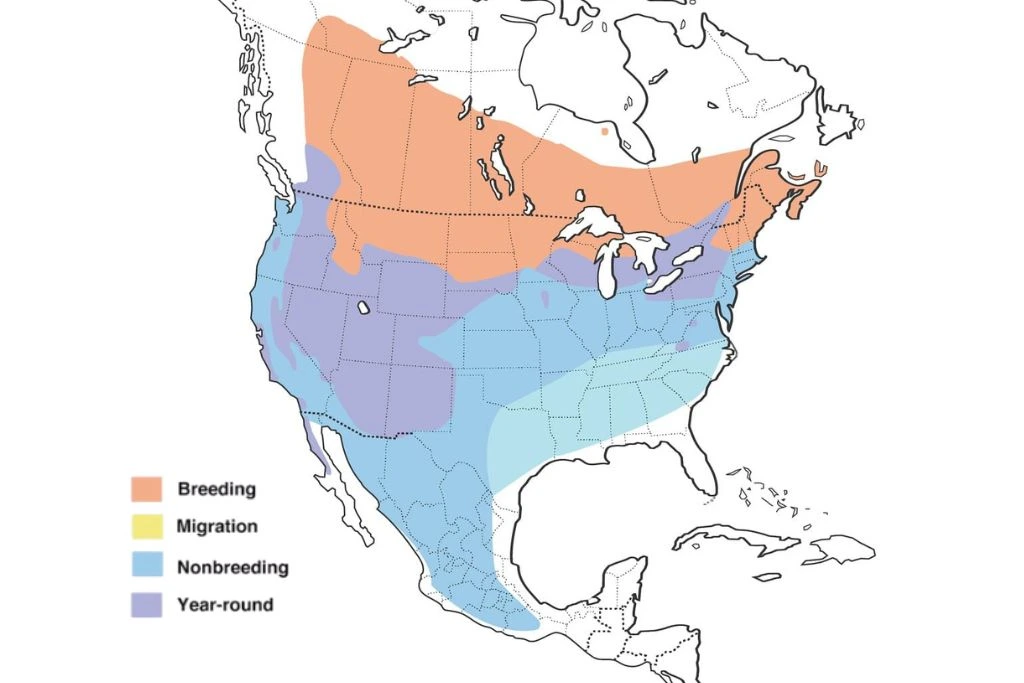
FAQs
What Is the Most Common Owl in Ohio?
The most common owl in Ohio is the eastern screech owl (Megascops asio).
What Does It Mean When You See Owls?
Seeing owls can be symbolic and may represent wisdom, intuition, or a message from the spiritual realm.
Are Owls Good To Have Around?
Owls are beneficial to have around as they help control rodent populations and contribute to a balanced ecosystem.
What Attracts Owls?
Owls are attracted to areas with abundant prey, such as mice, voles, and other small mammals.
What Are Owls Known For?
Owls are known for their exceptional nocturnal vision, silent flight, and ability to hunt and capture prey in darkness.
Is Owls a Symbol of Good Luck?
Yes, owls symbolize wisdom and luck in many cultures.



